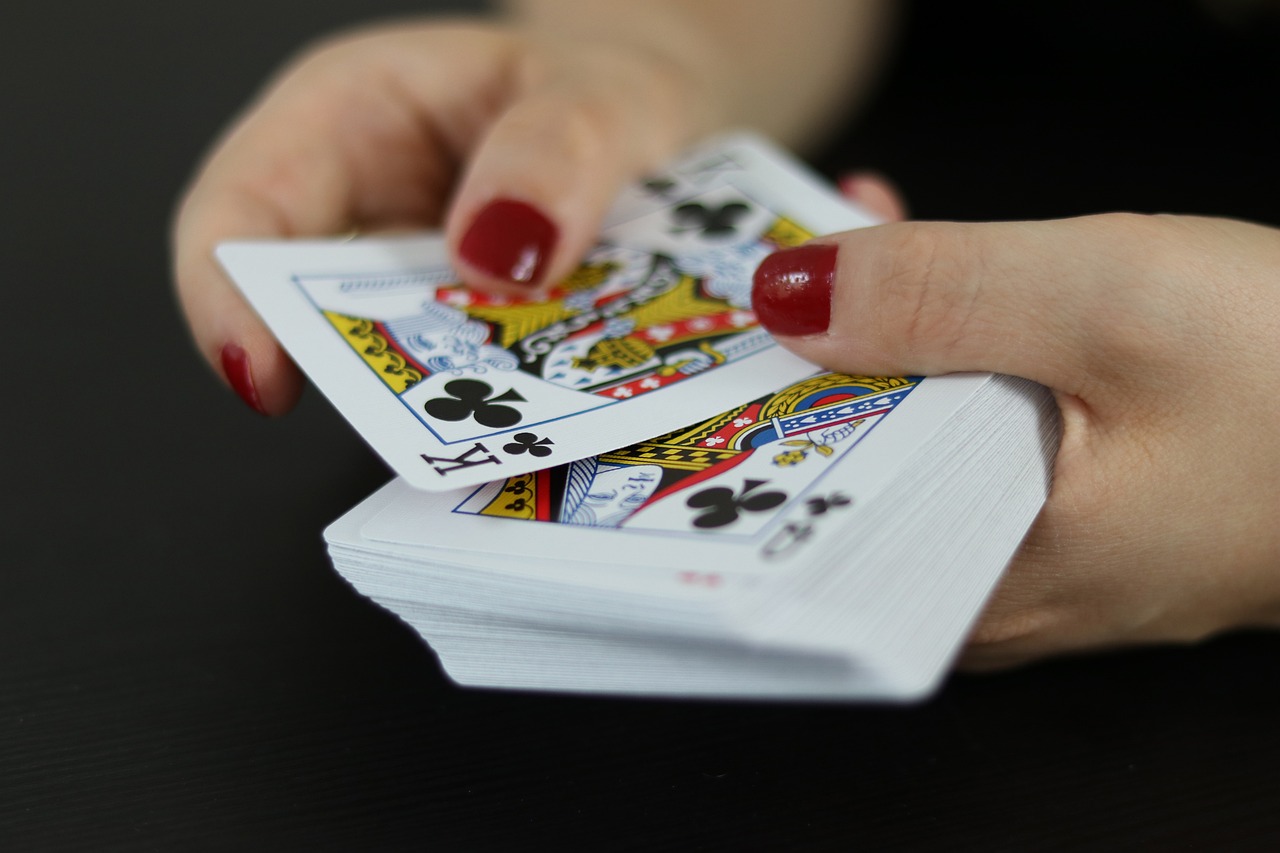Mastering Poker Hands: Advanced Strategies for Dominating with Two Pairs is a guidebook that provides players with the necessary skills and knowledge to excel in the game of poker. This book focuses on the advanced strategies required to dominate with two pairs, one of the most common hands in poker. It covers everything from hand selection and position to bet sizing and bluffing, giving players the tools they need to take their game to the next level. Whether you’re a beginner or an experienced player, this book is an essential resource for anyone looking to improve their poker skills and win more consistently.
Mastering Poker Hands: Advanced Strategies for Dominating with Two Pairs
The first step in mastering two pairs is to understand the value of the hand. Two pairs is a hand that consists of two cards of one rank and two cards of another rank. For example, a hand with two kings and two jacks would be considered two pairs. This hand is ranked higher than one pair but lower than three of a kind.
The next step is to understand the importance of position. Position refers to where a player is seated in relation to the dealer. The player in the dealer position has the advantage of acting last in each round of betting. This allows them to see how their opponents have acted before making their own decision. When holding two pairs, it is important to consider the position of your opponents and adjust your strategy accordingly.
One advanced strategy for dominating with two pairs is to slow play the hand. Slow playing involves playing the hand in a way that appears weak in order to lure your opponents into betting more. For example, if you have two pairs on the flop, you may choose to check instead of betting. This can give the impression that you have a weak hand and encourage your opponents to bet more. Once the turn and river cards are revealed, you can then make a larger bet and potentially win a larger pot.
Another strategy is to bluff with two pairs. Bluffing involves making a bet or raise with a weak hand in order to make your opponents fold. When bluffing with two pairs, it is important to consider the board and the actions of your opponents. If the board is showing a potential flush or straight, your opponents may be more likely to call your bluff. Additionally, if your opponents have been playing aggressively, they may be less likely to fold to a bluff.
A third strategy is to value bet with two pairs. Value betting involves making a bet with a strong hand in order to extract the most value from your opponents. When value betting with two pairs, it is important to consider the strength of your opponents’ hands and adjust your bet accordingly. If your opponents have weak hands, you may want to make a smaller bet in order to encourage them to call. If your opponents have strong hands, you may want to make a larger bet in order to discourage them from calling.
In addition to these strategies, it is important to pay attention to your opponents’ actions and adjust your strategy accordingly. If your opponents are playing aggressively, you may want to play more defensively. If your opponents are playing passively, you may want to play more aggressively.
In conclusion, mastering two pairs in poker requires a combination of skill, strategy, and luck. By understanding the value of the hand, the importance of position, and advanced strategies such as slow playing, bluffing, and value betting, players can increase their chances of dominating with two pairs. Additionally, paying attention to your opponents’ actions and adjusting your strategy accordingly can give you the edge you need to win.
The Importance of Position in Poker Hands: How to Use it to Your Advantage
Position refers to where a player is seated in relation to the dealer. The player to the left of the dealer is known as the small blind, and the player to their left is the big blind. The rest of the players are seated in a clockwise direction around the table. The player in the last position, also known as the button, has the best position because they act last in each betting round.
When holding two pairs, position is crucial because it can help you control the pot size and extract more value from your opponents. If you are in an early position, you should be cautious and only play your hand if you have a strong two pair. This is because you risk being raised by players in later positions who may have a stronger hand.
However, if you are in a late position, you can be more aggressive with your two pairs. This is because you have more information about the strength of your opponents’ hands. If the players before you have checked, it is likely that they do not have a strong hand. This is an opportunity for you to bet and take control of the pot.
Another advantage of being in a late position is that you can extract more value from your opponents. If you have a strong two pair and your opponents have weaker hands, you can bet and raise to increase the pot size. This is because your opponents are more likely to call your bets if they are in a weaker position.
However, if you are in an early position and your opponents have stronger hands, you should be cautious and only call their bets. This is because you risk losing more chips if you raise and they re-raise you.
In addition to position, it is important to consider the texture of the board when playing two pairs. The texture of the board refers to the cards that are on the table. If the board is paired, it is less likely that your opponents have a strong hand. This is because it is more difficult to make a full house or four of a kind when the board is paired.
On the other hand, if the board is unpaired, it is more likely that your opponents have a strong hand. This is because there are more possibilities for them to make a straight or a flush.
When playing two pairs, it is important to pay attention to the betting patterns of your opponents. If they are betting aggressively, it is likely that they have a strong hand. In this case, you should be cautious and only call their bets. However, if they are checking, it is an opportunity for you to bet and take control of the pot.
In conclusion, mastering poker hands requires a deep understanding of position and how to use it to your advantage. When holding two pairs, position is crucial because it can help you control the pot size and extract more value from your opponents. If you are in an early position, you should be cautious and only play your hand if you have a strong two pair. However, if you are in a late position, you can be more aggressive with your two pairs and extract more value from your opponents. Additionally, it is important to consider the texture of the board and the betting patterns of your opponents when playing two pairs. By mastering these advanced strategies, you can dominate the game of poker and increase your chances of winning.
Reading Your Opponents: How to Analyze Their Poker Hands and Make Better Decisions
When it comes to analyzing your opponents’ poker hands, there are several things to consider. The first is their betting patterns. How much are they betting? Are they betting aggressively or passively? Are they raising or calling? These actions can give you clues about the strength of their hand.
Another thing to consider is their position at the table. Players in early position are more likely to have strong hands, while players in late position may be bluffing or trying to steal the pot. You should also pay attention to the number of players in the hand. The more players there are, the more likely it is that someone has a strong hand.
Once you have analyzed your opponents’ betting patterns and position, you can start to narrow down the range of hands they might have. For example, if a player raises pre-flop and then bets aggressively on the flop, they are likely to have a strong hand like a pair or better. If a player calls pre-flop and then checks on the flop, they may have a weaker hand like a draw or a low pair.
One of the most important things to remember when analyzing your opponents’ poker hands is to look for inconsistencies in their actions. If a player is betting aggressively one minute and then suddenly checks, it could be a sign that they are bluffing or have a weak hand. Similarly, if a player is consistently betting the same amount, it could be a sign that they have a strong hand and are trying to lure you into a trap.
When it comes to playing with two pairs, there are several advanced strategies you can use to dominate your opponents. The first is to slow play your hand. This means that you should play your hand passively and try to lure your opponents into betting more. For example, if you have two pairs on the flop, you could check and let your opponents bet. Then, on the turn or river, you can raise and try to win a larger pot.
Another strategy is to bluff. If you have two pairs but your opponents are betting aggressively, you could try to bluff them into thinking that you have a stronger hand. For example, you could raise their bet and make it look like you have a full house or a flush. This can be risky, but it can also be very rewarding if you pull it off.
Finally, you should always be aware of the pot odds when playing with two pairs. This means that you should calculate the odds of making a better hand and compare it to the size of the pot. If the pot odds are in your favor, you should continue to play your hand. If not, you should fold and wait for a better opportunity.
In conclusion, mastering poker hands requires a combination of skill, strategy, and luck. To analyze your opponents’ poker hands, you should pay attention to their betting patterns, position, and the number of players in the hand. When playing with two pairs, you can use advanced strategies like slow playing, bluffing, and calculating pot odds to dominate your opponents. With practice and experience, you can become a master of poker hands and increase your chances of winning.
Bluffing in Poker Hands: When to Do It and How to Pull It Off Successfully
Bluffing is a risky strategy that should only be used in certain situations. The first thing you need to consider is your position at the table. Bluffing from early position is much riskier than bluffing from late position. This is because you have more information about your opponents’ hands when you act later in the hand. If you are in early position, you should only bluff if you have a strong read on your opponents and believe that they are weak.
Another factor to consider when bluffing is the size of the pot. Bluffing is most effective when the pot is large. This is because your opponents are more likely to call a small bet than a large one. If the pot is small, it may not be worth risking your chips on a bluff.
The strength of your opponents’ hands is also an important factor to consider when bluffing. If your opponents have shown strength throughout the hand, it may be difficult to convince them that you have a better hand. On the other hand, if your opponents have shown weakness, it may be easier to bluff them out of the pot.
When you decide to bluff, it is important to make your bet size consistent with the story you are trying to tell. If you are representing a strong hand, your bet should be large enough to make your opponents believe that you have a premium hand. If you are representing a weaker hand, your bet should be smaller to make it more believable.
One of the keys to successful bluffing is to be unpredictable. If your opponents can predict when you are bluffing, they will be more likely to call your bets. Mixing up your play by occasionally bluffing with strong hands and occasionally playing strong hands passively will keep your opponents guessing.
Another important aspect of successful bluffing is reading your opponents. If you can identify when your opponents are weak, you can take advantage of their vulnerability by bluffing them out of the pot. Pay attention to their betting patterns, body language, and any other tells that may give away the strength of their hand.
In conclusion, bluffing is an important skill in poker that can help you win pots even when you don’t have the best hand. However, it is a risky strategy that should only be used in certain situations. When deciding to bluff, consider your position at the table, the size of the pot, and the strength of your opponents’ hands. Make your bet size consistent with the story you are trying to tell and be unpredictable in your play. Finally, read your opponents to identify when they are weak and vulnerable to a bluff. By mastering these strategies, you can become a successful bluffer and dominate with two pairs in poker hands.
The Art of Folding: Knowing When to Walk Away from a Losing Poker Hand
The art of folding is not just about giving up on a hand that is clearly losing. It is about recognizing when a hand has the potential to become a losing hand and getting out before it is too late. This requires a deep understanding of the game and the ability to read your opponents.
One of the most common mistakes that novice poker players make is holding onto a hand for too long. They may have a pair of aces, for example, and be convinced that they have the best hand. However, as the game progresses, other players may start to raise the stakes, indicating that they have stronger hands. If the novice player continues to hold onto their pair of aces, they may end up losing a significant amount of money.
Experienced poker players know when to fold a hand that is unlikely to win. They understand that sometimes it is better to cut their losses and wait for a better opportunity. This requires a certain level of discipline and patience, as well as the ability to read the other players at the table.
One strategy that experienced poker players use to determine when to fold is to pay attention to the betting patterns of their opponents. If a player is consistently raising the stakes, it may indicate that they have a strong hand. Conversely, if a player is only calling the bets, it may indicate that they have a weaker hand. By paying attention to these patterns, a player can make more informed decisions about when to fold.
Another important factor to consider when deciding whether to fold is the position of the player at the table. Players who are in early position, meaning they are one of the first to act, have less information about the other players’ hands. As a result, they may be more likely to fold a hand that could potentially win. Conversely, players in late position, meaning they are one of the last to act, have more information about the other players’ hands and may be more likely to stay in the game.
Ultimately, the decision to fold a hand comes down to a combination of factors, including the strength of the hand, the betting patterns of the other players, and the position of the player at the table. Experienced poker players know that folding is not a sign of weakness, but rather a strategic move that can help them win in the long run.
In conclusion, mastering the art of folding is an essential skill for any serious poker player. It requires discipline, patience, and the ability to read the other players at the table. By paying attention to the betting patterns of their opponents and considering their position at the table, players can make more informed decisions about when to fold. Remember, folding is not a sign of weakness, but rather a strategic move that can help you win in the long run. Advanced Strategies for Dominating with Two Pairs is a comprehensive guide that provides players with the necessary skills and knowledge to dominate the game of poker. The book covers various advanced strategies and techniques that can be used to improve one’s gameplay and increase their chances of winning. With its clear and concise explanations, this book is an excellent resource for both novice and experienced players looking to take their game to the next level. Overall, Mastering Poker Hands is a must-read for anyone serious about mastering the game of poker.




